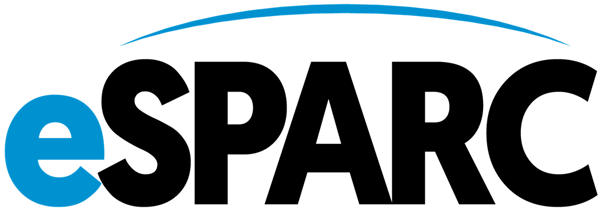Energy and the heart of ESG
Few industries within the global economy have as profound a relationship between their operations and the world around them as those in the energy sector. The same companies that provide the lifeblood of a society are often associated with high resource consumption, large carbon output, and waste production. As a result, stakeholders of all types are beginning to scrutinize the Environmental, Social, and Governance (ESG) attributes of companies for insight into their long-term sustainability, as well as their alignment with evolving public policy goals. Implementation of an ESG Management Program offers an efficient and effective means of meeting this growing demand while at the same time bolstering internal risk management practices and identifying areas to improve efficiency and reduce operational footprints.
Key Performance Indicators
eSPARC carefully crafts Key Performance Indicators (KPIs) to track ESG performance throughout the investment lifecycle. KPIs are designed to allow the evaluation of benefits gained through the continuous implementation of an ESG policy. Example KPIs:
- Environmental KPIs: GHG emission rates, water consumption rates, and produced water generation rates.
- Social KPIs: Ecologically sensitive areas, drinking water resource areas, total incident rates, lost time case rates, workplace safety incident rates, and philanthropic giving.
- Governance KPIs: Code of Business Conduct and Ethics, and adherence to national and international law.
What’s in a number?
“15,000 ton reduction in GHG emissions”… but what does it mean? Does it reflect a change in fund composition or conditions outside of management control? The fact is that if a power plant, for example, simply runs less often, the lower emissions provide little to no insight as to how the drop in emissions impacted profitability, efficiency, or the alignment with national reduction policy goals. This is why our ESG analysis uses impact KPIs that not only reflect the true performance of investments, but can be clearly linked to both risk exposure and financial performance.
Our Approach
Efficency is not just a virtue of ESG performance, but of ESG management itself. eSPARC filters through the noise of publically available and internally stored data to extract pertinent information for both the investor and the asset manager. By streamlining the data gathering process, our approach allows stakeholders to assess the ESG attributes of an investment without adding an undue administrative burden or cost.
ASSESS
- Identify the key ESG factors impacting company operation, performance, and goals.
- Evaluate the most important ESG concerns amongst close stakeholders.
- Set clear ESG objectives to guide the framework and maximize the value for the ESG program.
ANALYZE
- Distill company data that is already publicly available.
- Review pertinent internal company data.
- Incorporate relevant third party data, such as industry norms and local conditions, to put company peformance into context.
ACT
- Identify risks and opportunities based on ESG performance.
- Develop ESG-minded solutions to reduce risk and improve the bottom line.
- Continuously track and monitor performance to allow for efficient management and avoidance of ad hoc costs.
ESG Reports
The eSPARC ESG Annual Sustainability Report allows firms to provide key stakeholders valuable insight into how the company is incorporating ESG into its management strategy. The report provides concise, high-level summaries of the policies and practices employed,and highlights ESG efforts through demonstrable KPI performance and specific case studies. The reports can be easily integrated with existing annual reporting or available as stand alone documents.
The eSPARC ESG Digital Report is a multi-platform publishing that allows internal users to engage with the ESG data interactively-anywhere, anytime. The performance of individual assets is presented to better understand potential ESG opportunities and risks. Audited data can also be presented to both current and prospective investment partners, with real time updates as new data becomes available.
The eSPARC ESG Vitals Reports provide operational facing data for practical application by both asset managers and investment professionals. It is a concise and comprehensive accounting of ESG impacts and performance.
- Relevant—includes carefully selected ESG metrics aimed to provide actionable information and to demonstrate the impact of individual assets.
- Meaningful—places asset performance in context by providing industry averages, local environmental and social conditions, and the current regulatory landscape.
- Standardized—allows the performance of a variety of asset types to be compiled in one concise report that can be compared to prior asset mixes and industry standards.
ESG Policy and Program Development
- Develop and maintain tailored sustainability programs that incorporate the key tenets of ESG.
- Incorporate KPIs consistent with the goals of each organization in tailored periodic reports.
- Communicate ESG performance internally, externally (Annual Sustainability Reports), and to various third-party reporting frameworks (e.g., CDP).
- ESG Data Tracking and Management
- Track data relevant to the industry’s KPIs which is publicly available and provided by the client.
- Identify data gaps, provide recommendations for ESG program improvement, compare to industry averages, etc.
ESG Strength and Risk Assessments
- Site-specific technical and regulatory context. Material risk and value of a company identified as part of an acquisition or internal review.
- Enable companies to effectively communicate performance to external stakeholders that may otherwise be relying on incomplete publicly available data.
ESG and Sustainability Reporting
- CDP, GRI, etc.
- eSPARC supports companies as they initiate or continue their ESG reporting using established frameworks and reporting systems
- Based on our familiarity with reporting requirements and scoring methodologies, eSPARC works with companies to navigate this complex disclosure process
- First time reporters: work with companies to identify and gather data required, prepare responses, and provide actionable recommendations to address any data or information gaps
- Existing reports: identify areas of improvement from previous disclosures and assist with drafting responses and improve scoring
 Close
Close




